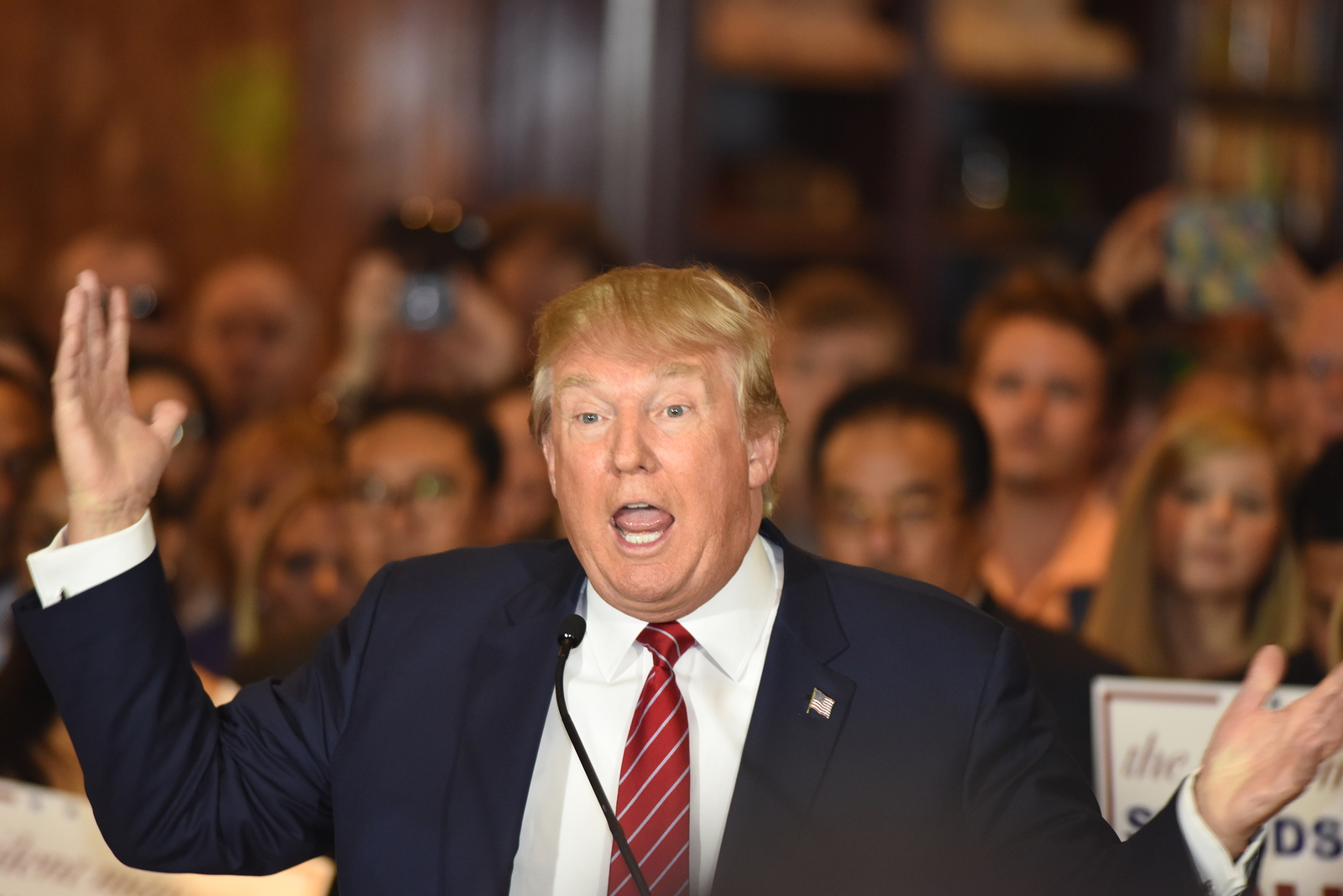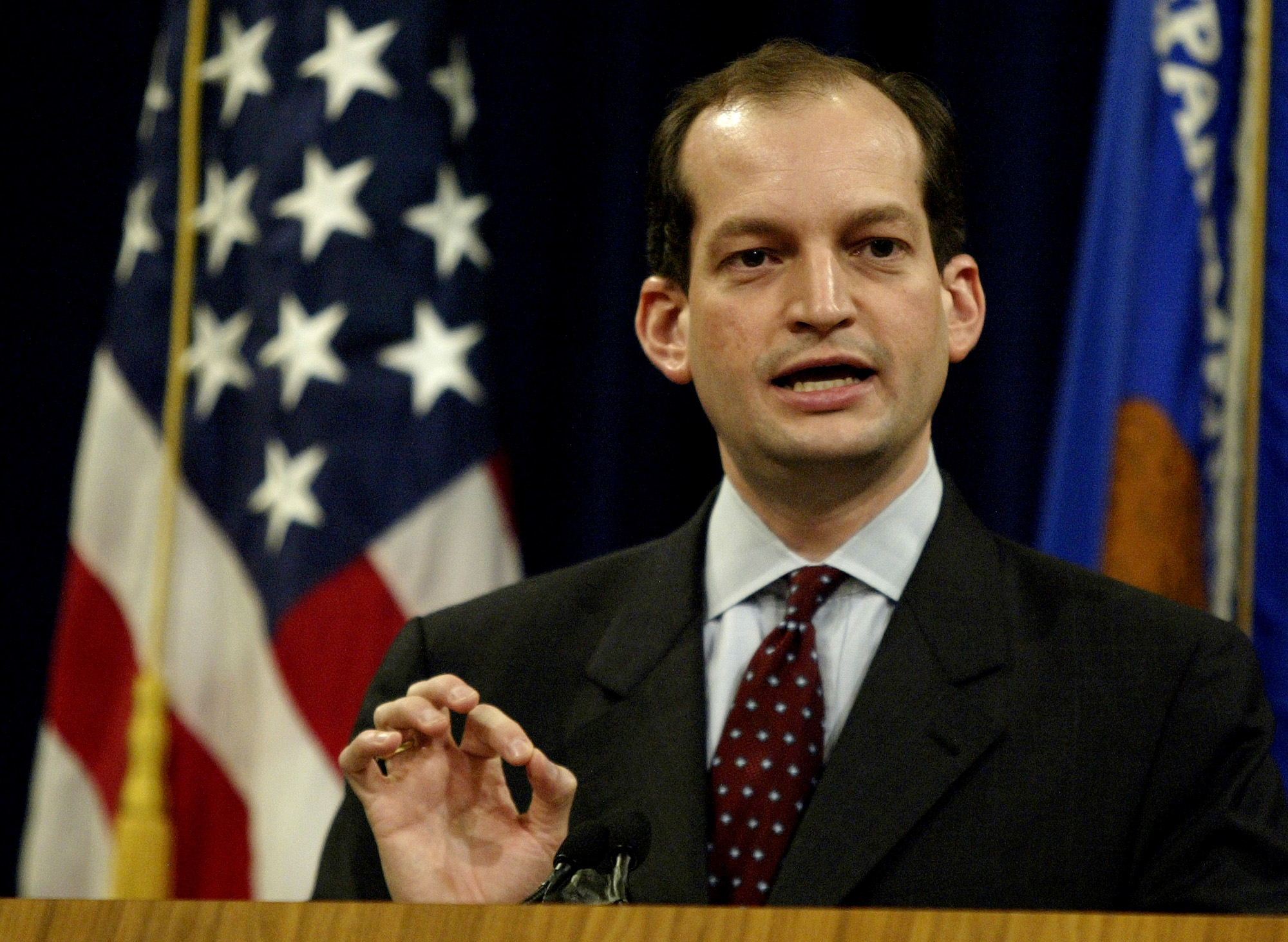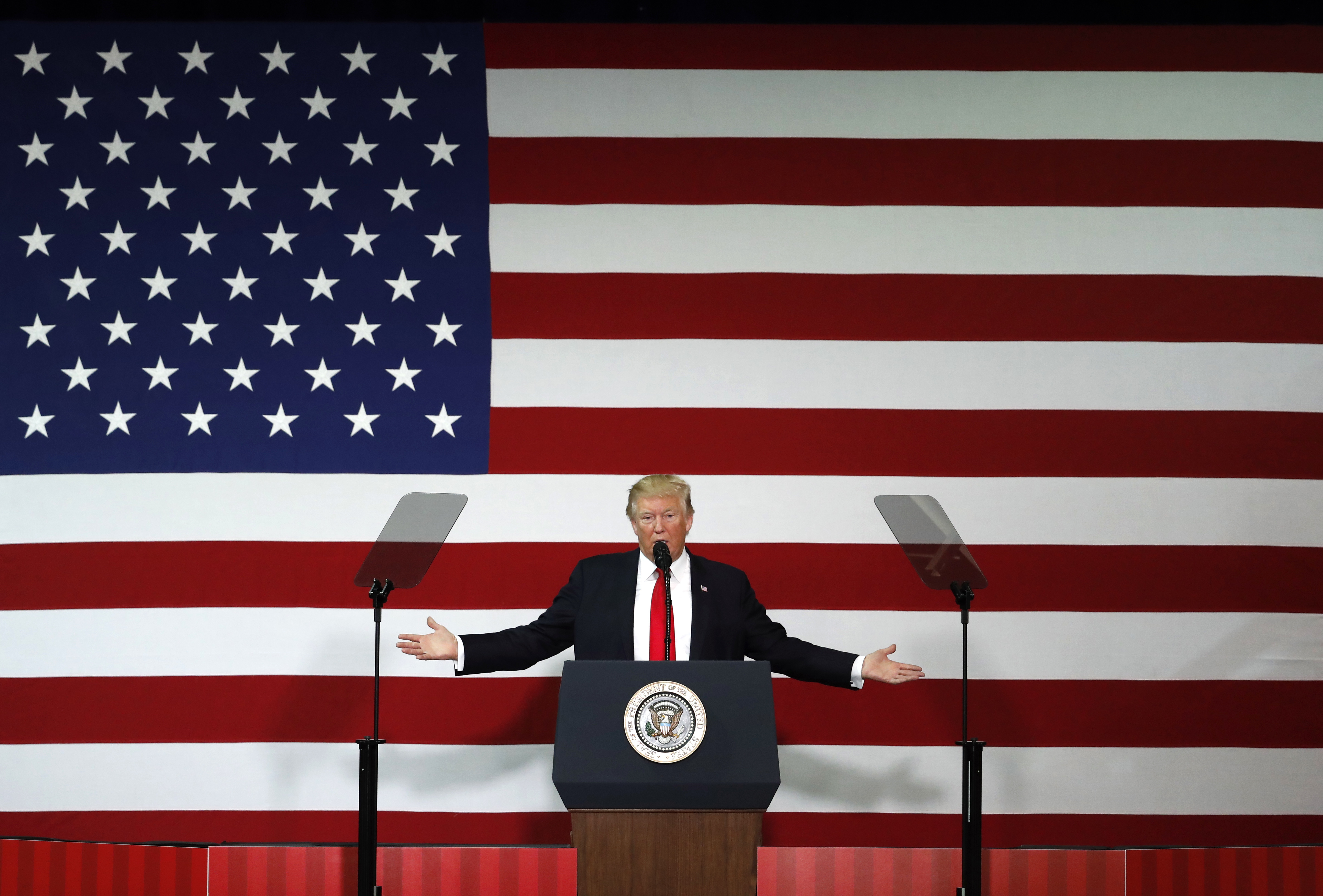
Republicans recently released their framework for tax reform in a notable step towards eventually drafting legislation aimed at fundamentally reforming the tax code.
The Unified Framework for Fixing Our Broken Tax Code gave a glimpse into the direction lawmakers are taking the tax reform discussion when it was released Sept. 27. Republicans began laying the groundwork for the current tax reform push nearly two years ago. They have made simplification and rate reductions a central focus since the start.
The tax framework has been rigorously scrutinized by economists and tax policy experts to determine its likely impact. Some have found it will simultaneously help companies and everyday people by boosting economic growth. Others find a likelihood that it will only really benefit the wealthy and large corporations.
The tax framework provides a good look into how the eventual bill is likely to look when it is finally drafted. But there are still many details to work out, and aspects of the framework might change as lawmakers continue to negotiate. Here is what the framework tell us about how tax reform is unfolding, and what it means for everyday Americans.
1.) How We Got Here
The federal tax code has not been reformed in any comprehensive way since 1986. It has gone through minor changes that have focused more on specific reforms like rate reductions. Lawmakers across the political spectrum have discussed the need for tax reform with the conversation becoming more prevalent in recent years.
Congressional Republicans began formulating a plan in the last couple of years with the aim of accomplishing comprehensive tax reform. President Donald Trump winning the election provided a pathway to reaching their goals. The president has made economic issues a cornerstone of his administration with the promise of a pro-growth tax plan becoming a critical part of that.
House Speaker Paul Ryan and Rep. Kevin Brady outlined their earlier policy goals in a tax reform blueprint June 2016. Trump later released a summary plan April 26 of this year outlining similar policy goals. Republican leaders have also held hearings over the past year, launched informational campaigns, and held internal discussions to work out the various details within their plan.
Republican leadership spent the week leading up to the release of the tax framework ensuring party members had the chance to weigh in. Republicans held a two-day private retreat so that they could discuss details openly. Trump discussed the new framework shortly after it was released Sept. 27 during a speech in Indianapolis, Indiana.
Republicans have since worked to advocate for their tax reform plan during speeches, interviews, and congressional hearings. They have also fought back against critics who warn the tax plan primarily helps the wealthy. House Speaker Paul Ryan said Oct. 24 that he hopes to pass a tax bill by Thanksgiving.
2.) What the Framework Tells Us
Republicans have made simplification and rate reductions central themes throughout the process. They hope to simplify the tax code by reducing the seven current income brackets down to three and by eliminating some deductions. They also plan to reduce corporate and individual rates to decrease the tax burden and spur economic growth.
The framework reduces the top individual tax rate from 39.6 percent down to 35 percent. The framework also taxes middle-income earners at 25 percent, and lower-income earners could see a slightly higher rate at 12 percent. It does leave room for lawmakers to add an additional rate for top earners.
The framework promises to provide simplicity and fairness by eliminating many itemized deductions that primarily benefit the wealthy. At the same time, it retains tax incentives for home mortgage interest, charitable contributions, work, higher education, and retirement security.
The framework also promises to help the middle-class in a few notable ways. It roughly doubles standard deductions and enhances the Child Tax Credit so that middle-class families can keep more of their paycheck. The framework will also implement what it refers to as a zero percent tax bracket for some lower-income taxpayers.
The framework includes a number of provisions for businesses with the aim of spurring economic growth. It promises to limit the maximum tax rate for small and family-owned businesses to 25 percent. The framework reduces the corporate tax rate to 20 percent. The current top rate for corporations is 35 percent.
The framework also repeals the death tax and Alternative Minimum Tax.
The plan allows businesses to immediately write off the cost of new investments for at least five years. It also imposes a one-time tax on offshore wealth. The goal is to incentivize companies to invest more in the country instead of avoiding taxes outside the country.
3.) Simplification and Rate Reduction
Republicans have debated among themselves what the final tax reform bill should eventually look like. But the overarching themes have tended to remain consistent. Their main objective is to do something comprehensive, simplify the tax code, and reduce rates for both individuals and businesses.
The National Taxpayers Union (NTU), a conservative tax policy advocate, found in a 2015 study that the economy loses $233.8 billion and 6.1 billion hours of productivity annually because of the complex tax code. The Government Accountability Office found in a 2014 study that the tax code is so complex that very few professional tax preparers are able to calculate the correct tax refund.
“Overall I think it’s an extremely encouraging starting point for tax reform,” NTU executive vice president Brandon Arnold told InsideSources. “I think it hits a number of key elements including simplicity for families, lower rates for individuals, it also makes our corporate tax code far more competitive which is going to stimulate job growth and economic expansion. I think it strikes a nice balance. It hits all those elements.”
The Institute on Taxation and Economic Policy (ITEP), a liberal research nonprofit, has been less optimistic over whether the framework helps to achieve those goals. Its research found Oct. 4 that the plan would primarily benefit the wealthy while doing little for middle and lower income earners. ITEP senior policy analyst Richard Phillips notes the plan is also prone to new complications.
“I think that the two biggest areas where it actually causes a substantial amount of more complications is on the business pass-through and corporation side,” Phillips told InsideSources. “Right now if you’re a pass-through business you’re taxed through your normal tax code.”
Phillips adds the lower rate could incentivize wealthier individuals to abuse the pass-through rate. They could potentially pass ordinary income through a pass-through entity to avoid the top rate. Phillips also expressed concern that the framework only includes the promise of critical rules to prevent abuse.
4.) Details Still Need to Be Worked Out
Republicans still have to work out a lot of various details before they are ready to draft a final bill. The framework excluded critical components like what the three income brackets will be placed at. They also haven’t fully detailed what standard deductions they will eliminate. ITEP filled in some of the gaps by drawing from earlier iterations of the plan like the blueprint.
“We’re still waiting on some critical details with this plan,” Phillips said. “You could see some different changes, depending on what the brackets are. They leave a lot of big pieces unfilled out. They say, for example, they’re going to put some sort of limit on the net interest deductions, but give no details. So that could be a pretty small provision, but that could be a trillion dollars.”
Republicans have been hinting at how the discussions have been going since the release of their plans. CNN reported Oct. 23 that lawmakers have been considering reducing the amount of money that could be invested tax-free in retirement accounts to offset deficit increases. Those discussions have reportedly included the 401(k) deduction. Trump addressed the concerns on social media by promising there will be no change to those plans.
5.) Global Competitiveness
The framework promises to help companies better compete in the global economy. American businesses have become increasingly less competitive in the global economy since the last major tax reform nearly three decades ago. The Congressional Budget Office found in an analysis that the current tax code is becoming increasingly less competitive worldwide.
Republicans hope to achieve those goals by lowering the top tax rate on corporations and small businesses. Employers would potentially have more funds to invest back into their businesses and employees. It will also include provisions to disincentivize businesses from shipping jobs overseas like the one-time tax on offshore funds.
6.) The Hope For Economic Growth
Republicans hope to reform the tax code in a way that helps stimulate economic growth. The framework reduces rates for corporations down to 20 percent. The top rate for corporations is currently one of the highest in the world at 35 percent. The high tax rate likely encourages corporations to move their operations out of the country.
The overall economy did start to show notable gains roughly two years ago after a slow economic recovery. Trump won in large part by appealing to middle-class workers who felt left behind in that recovery. The Business Roundtable found in a survey that business owners would begin investing more back into their companies and employees if the tax system was improved.
“All Americans will be winners because we will get stronger economic growth and everyone’s wages will rise,” Chris Edwards, the director of tax policy studies at the libertarian Cato Institute, told InsideSources. “The tens of millions of Americans who work for big businesses will be huge winners because their companies will become more competitive in the global economy.”
The Council of Economic Advisers (CEA) found in an analysis Oct. 16 that the plan would increase average household income by $4,000 annually. The report notes those savings would come from the corporate rate reductions. The CEA is an agency within the executive office, which advises the president on economic policy.
The Tax Policy Center (TPC), a liberal-leaning tax policy nonprofit, found in an analysis that the tax framework would add to the deficit by reducing federal revenue by $2.4 trillion over ten years. It also found that by next year all income groups would see their average taxes fall, but some taxpayers in each group will see more taxes. It notes the very highest income earners would receive the biggest tax cuts.
“Business tax cuts–that can help grow the economy,” TPC senior fellow Howard Gleckman told InsideSources. “There’s no question that if you cut tax rates, cut business taxes, business will invest more, and that will be good for the economy. But that’s in isolation, you also have to look at the other side of it. If you have a big tax cut that is not financed, either with offsetting tax increases, or spending cuts, and there’s no evidence of either one of those at this point, the only way the government can provide these tax cuts, is to borrow the money.”
7.) But What About The Deficit?
The United States has a growing deficit that has added trillions to the national debt. Tax reform that includes rate reductions could increase the deficit substantially since government revenue is primarily from taxes. Republicans have a few approaches to explore that would help them to control deficit increases caused by their tax reform plan. But those potential solutions also come with their own political obstacles.
“If Republicans don’t constrain spending, the deficit is going up,” Edwards said. “So one of the issues is the sustainability of the tax cuts. George Bush pursued tax cuts, but because Republicans didn’t control spending, deficits went up, which ultimately provided them an excuse to repeal some of the Bush tax cuts.”
Republicans have still not unveiled specifically how they hope to fund the rate reductions. It is possible they’ll look to make up some lost revenue when eliminating deductions, but it’s unclear how exactly that will look in the end. They are also looking towards revenue gains through economic growth.
“The first thing is it’s a very big business tax cut, and depending on how you measure it, a lot of increases in individual tax rates overall, which is interesting,” Gleckman said. “Another thing that I think is worth noting is that we found it adds almost two and a half trillion dollars to the debt over the next 10 years, which means it doesn’t even come close to paying for itself.”
Republican Leadership originally hoped to have a border adjustment tax, but it prompted too much infighting. It is a value-added tax levied on imported goods. It is applied when a product is produced in a foreign country but sold domestically. A border adjustment tax prioritizes domestic production by lowering the tax rate for exports while increasing the rate for imports.
8.) The Budget Is Key
Senate Republicans took a major step towards implementing tax reform Oct. 19 by approving a budget resolution for 2018. The budget resolution sets up a process that makes it easier to pass their tax reform bill. It also leaves lawmakers the flexibility to increase the deficit by $1.5 trillion over 10 years.
CNBC reports that the president personally urged lawmakers Oct. 22 to quickly adopt a budget. The House passed its own budget previously that differs in some notable ways which means they cannot yet be enacted. The two budgets must eventually be reworked so they are identical.
The House budget is most notably different in how it treats tax reform costs. Roll Call reports that budget contains reconciliation instructions requiring the eventual tax bill to be deficit-neutral. House Republicans hinted that they might simply accept the Senate plan to avoid delay.
“I think cutting the budget would also cause problems because a lot of the things we invest in are public goods that are really critical for the economy, as well,” Phillips, whose research has focused on corporate tax policy and refundable credits, said. “So sure you could help eliminate the deficit by cutting funding for infrastructure programs. But in the long-term, that’s really going to hurt your growth because of the infrastructure program, all those roads and bridges, are also critical to economic growth.”
Senate Majority Leader Mitch McConnell insisted Oct. 22 that passing a bill that doesn’t reduce revenue is still an objective. He also reiterated the argument that the plan would help reduce the deficit through economic growth during an interview with CNN. He couldn’t guarantee tax reform would not add to the deficit.
9.) Republicans Face Roadblocks
Washington D.C. is also dealing with a lot of political tensions that are likely to interfere in the push for comprehensive tax reform. Republicans are facing infighting while the left is highly opposed to major parts of their reform efforts. President Trump and congressional leaders have also clashed on multiple occasions like when they failed to reform healthcare.
“There are a number of sticking points,” Arnold said. “I think the state and local tax (SALT) deduction is one. Republicans in blue states will be getting a lot of pressure, especially in the high taxed states, from constituents and perhaps the special interest groups to try to maintain as much of the SALT deduction as possible.”
Republicans will also face pressure from many different special interest groups who have varying viewpoints on how the tax system should look. Many groups benefit from the current tax code and are likely to fight to keep those benefits. Others might see the tax reform push as a means to get new benefits.
“The mortgage interest deduction is always a flash point,” Arnold said. “You can see the realtors and perhaps even the home builders, and other folks associated with the home building industry trying to put pressure on members of Congress to try to preserve that as much as they can.”
Democrats and others on the left have also been vocally opposed to the plan. New York Gov. Andrew Cuomo and Sen. Chuck Schumer have also teamed up against the tax plan. The New York Daily News reports that they are particularly focused on the elimination of state and local tax deductions which they argue would hurt states like New York.
Edwards is concerned that lawmakers have promised too much when it comes to tax reform. He notes there’s not much they can actually do on reducing middle-income taxes because the rates are typically fairly low already. He believes they should instead focus on the pro-growth aspects of the reform which could help everyone.
“I think that’s really problematic because, they’re setting themselves up, they’re putting themselves in a corner, sort of setting themselves up for failure,” Edwards, who also serves as the editor for DownsizingGovernment, said. “The middle-class hardly pays any income tax. This is not the 1980s. When Reagan did tax cuts, the cost burden was much more distributed among income groups and the middle-class paid a lot of taxes.”
Edwards detailed his concerns shortly after the tax framework was released on the Cato At Liberty blog. He warns lawmakers not to increase the refundable tax credits while reforming the tax code as a means of keeping their promise to middle-income earners.
10.) A Lesson Learned From Healthcare
Republican leadership seems determined to make tax reform a success after their healthcare debacle. Republicans were unable to keep one of their biggest political promises by failing to repeal and replace the Affordable Care Act. They would face two major legislative failures since securing the presidency earlier this year if tax reform also fails.
“I think this one is taking a very different course,” Arnold said. “It’s become a much more bottom-up approach. So members from across the conference are having a much larger role in influencing the bill. I think going forward they’ll have a much larger role now that we have the framework. They have the rough sketch of what this painting will look like and now they’re filling in the colors and adding more detail.”
Republicans appear to be making more of an effort to include party members in the tax reform push. The approach may help them avoid problems that caused their healthcare reform efforts to falter. Arnold doubts they will get much support on the left with the possible exception of a few Democrats if the bill looks like it’s already going to pass. Being the deciding vote could be riskier politically.
11.) Who Wins Under This Framework
The tax framework promises to help people across the country through simplicity and rate reductions. But tax policy experts have come to varying conclusions on who actually benefits under this plan. Arnold argues that generally, people across the board will benefit with few exceptions.
“I’m sure there are a lot of special interests groups out there that say they stand to lose tremendously,” Arnold, who has regularly testified on fiscal policy during congressional hearings, said. “I think a simpler and fairer code is going to benefit everybody, even if some groups aren’t benefiting as much as others.”
Phillips counters that the framework would primarily benefit the wealthy while doing little for lower and middle-income earners. He notes its clearly a giant tax cut for the rich because it lowers their top rate, cuts businesses taxes, cuts the pass-through rate, and eliminates the death and alternative minimum taxes.
“I think overall when you look at the lower and middle-income classes, what they’ll typically see is a very small haircut,” Phillips said. “But I think one of the striking things is about the framework is they put out is that within these different groups, we might actually see a substantial number of these people have tax increases.”
12.) Alternative Minimum and Death Tax
The framework repeals what is known as the death tax and Alternative Minimum Tax (AMT). The death tax, technically known as the estate tax, is applied to the estate of a deceased person when it is transferred in their will. The AMT requires an additional income tax rate for certain individuals, corporations, and other groups that have special exemptions.
The framework argues that the AMT is unfair because it essentially requires some taxpayers to do their taxes twice while no longer serving its intended purpose. The Internal Revenue Service (IRS) has recommended repealing the AMT. The Tax Policy Center notes it was originally intended to prevent perceived abuses by a handful of very wealthy individuals, but now impacts roughly five million people.
13.) The Zero Tax Bracket
The framework promises to essentially provide a zero percent tax bracket for some Americans. It plans on doing this by consolidating standard deductions and personal exemptions at an increased amount. The changes are aimed at creating a zero tax bracket by eliminating taxes on the first $24,000 of income earned by a married couple, and $12,000 earned by individuals.
“One issue that has gotten a lot of confusion, I think, is the so-called zero-rate policy,” Arnold said. “There is a lot of concern that Republicans are raising that zero percent rate up to 12 percent. We’ll know the exact details when we see where the bracket thresholds are drawn. But all indications suggest that 10 percent rate is actually becoming a zero percent rate.”
The tax framework does increase the lowest tax rate for taxpayers from 10 percent to 12 percent. But the income levels for each bracket were not included in the framework. The zero percent rate might essentially become a fourth bracket for lower-income earners.
14.) Pass-Through Businesses
The tax framework limits the top tax rate applied to owners of sole proprietorships, partnerships, and S corporations down to 25 percent. Those businesses are known as pass-through entities and are often small and family-owned. The owners and investors are directly taxed on their income instead of having a corporate rate applied to their business. The taxes are essentially passed on to the owners.
Republicans hope the approach will help lessen the tax burden many small businesses face. But not every pass-through business is small and family-owned, which has prompted concern among critics. They believe the system could be abused by wealthy individuals who want to avoid paying the top personal income tax rate.
“So the major pieces of it are the special rate, for what is called pass-through income,” Chuck Marr, director of federal tax policy at the Center on Budget and Policy Priorities, told InsideSources. “That’s law firms, hedge funds, accounting firms, real estate investors, high-income people having money in partnerships. This says, well, you don’t have to pay the top rate, you get a special rate.”
The framework does promise to include measures designed to prevent abuse. Those protections could prevent the recharacterization of personal income into business income by wealthy individuals trying to pay a lower rate. The framework does not reveal exactly what those protections will be.
15.) How Americans Feel About Tax Reform
Americans have increasingly become more interested in tax reform over the past year. Fox News found in a poll August 30 that 49 percent of voters feel it is important to pass tax reform legislation this year. But the same poll found that only 14 percent think it’s going to be accomplished.
A Politico-Harvard T.H. Chan School of Public Health poll found Sept. 21 that people are more interested in other issues like lowering prescription drug costs, increasing the minimum wage, and infrastructure spending. A CNN poll Oct. 19 found that a slim majority oppose the GOP plan at 52 percent.
“With unemployment very low, the biggest economic problem facing the United States is that people who didn’t go to college, their wages have been stagnant for decades,” Marr said. “There needs to be something. There needs to be a focus or a priority on raising their incomes, and that crosses different policy areas. But when we’re talking about taxes, we’re going to move around trillions of dollars; we should do something for those people.”
Follow Connor on Twitter











